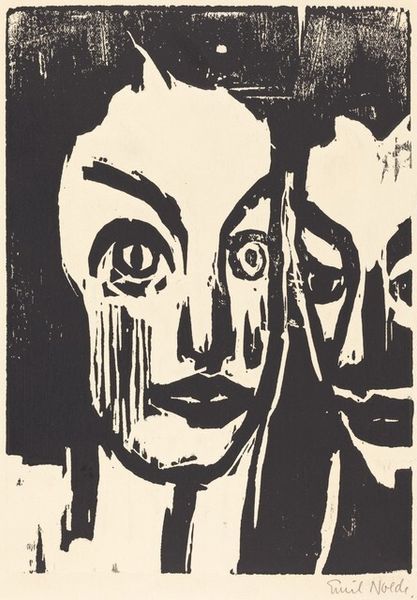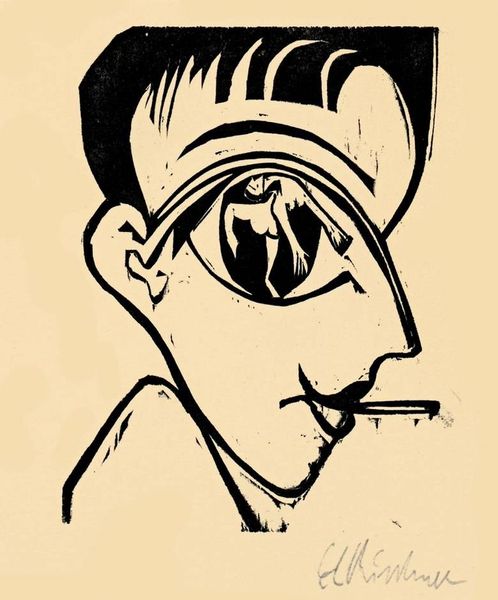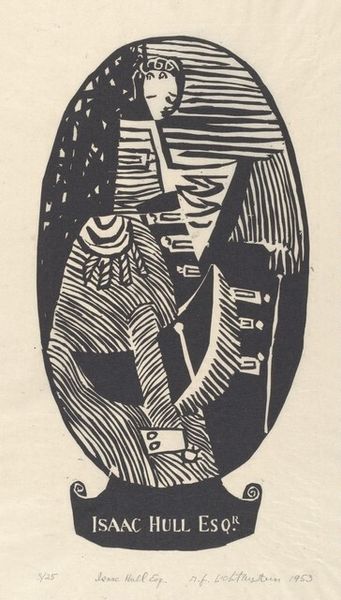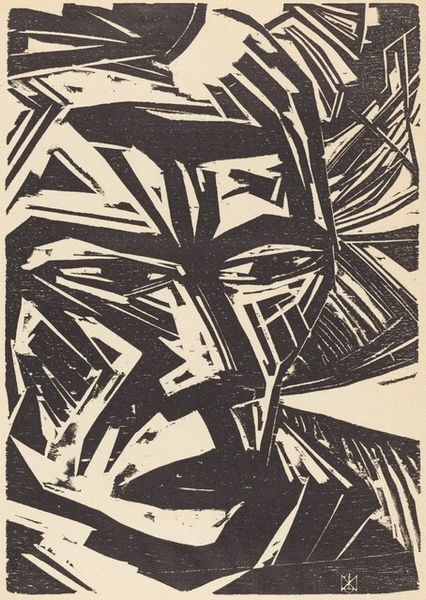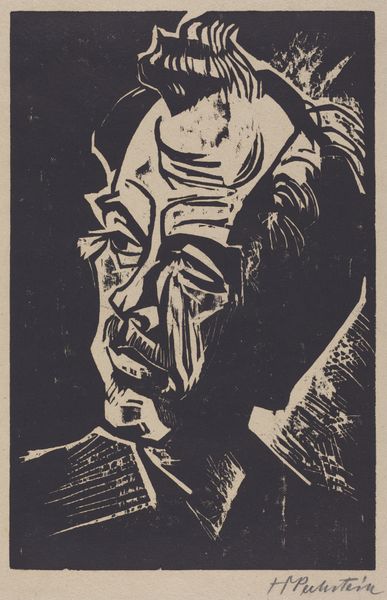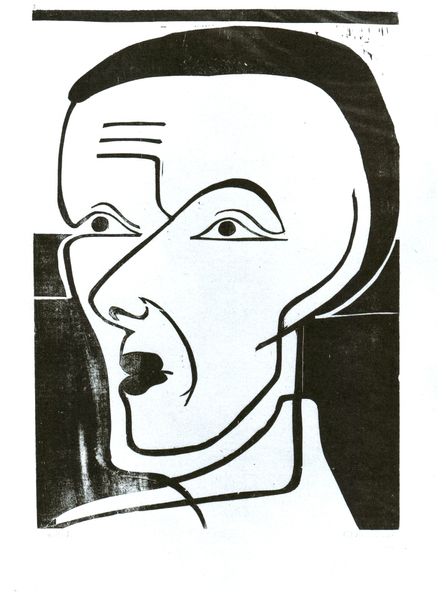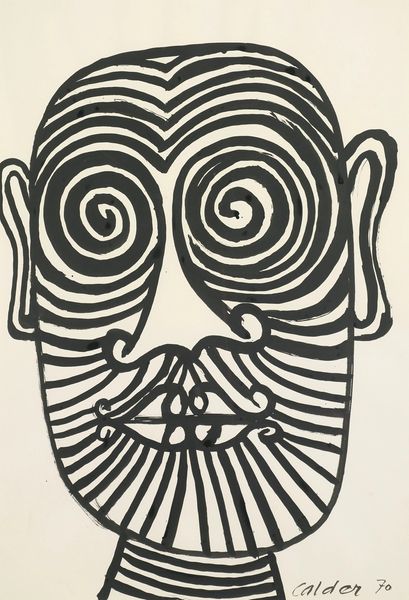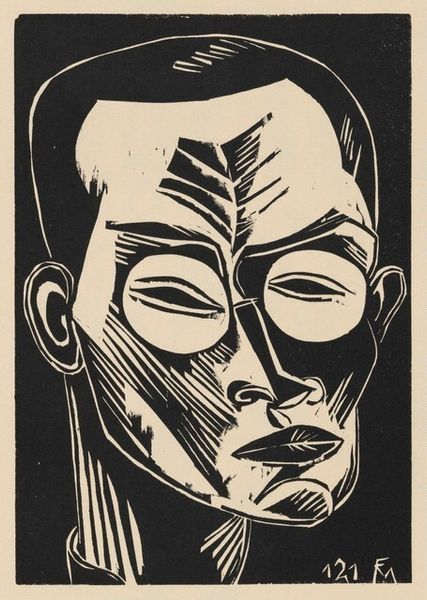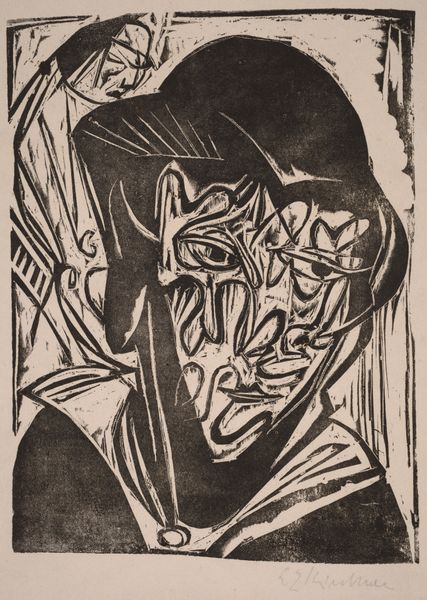
drawing, print, woodcut, graphite
#
portrait
#
drawing
#
self-portrait
# print
#
caricature
#
caricature
#
german-expressionism
#
figuration
#
form
#
expressionism
#
woodcut
#
line
#
graphite
#
portrait drawing
Copyright: Public domain
Curator: This stark woodcut print, "Self Portrait" by Josef Capek, was created in 1918, a turbulent period near the end of World War I. Editor: Immediately, it feels severe and almost confrontational. The sharp lines, the high contrast black and white... it creates a powerful, almost unsettling presence. Curator: Indeed. Capek, a Czech artist associated with German Expressionism, often utilized such bold contrasts. The choice of woodcut as a medium lends itself well to conveying a feeling of angst and fragmentation, which became a symbol for artists affected by the psychological landscape of the period. Editor: Looking at those eyes magnified by the round glasses, I'm wondering about his choice of caricature here. There’s a hint of critique, or maybe even vulnerability masked by intellect? And this exaggerated perspective—it mirrors how individuals felt powerless within a society driven to global warfare. Curator: The distorted features invite contemplation about how self-perception is often at odds with public persona. Caricature here does act as a mask—layering identity and emotional concealment. Editor: It’s interesting to consider this portrait in terms of national identity as well. Czech artists like Capek navigated the precarious territory of expressing themselves amid empires. There is a strong implication of a personal resistance and also, cultural defiance here. Curator: Consider the impact of such images on morale, especially considering print's relative ease of distribution. It democratizes not only art, but potentially also subversive sentiments through graphic form. The lack of subtlety reinforces this reading of the portrait. Editor: And it becomes clear that even in something as seemingly simple as a self-portrait, political and social layers permeate everything. This one manages to condense an immense pressure and sense of historical unease within such economical lines. Curator: Precisely. Capek’s Self Portrait leaves us pondering about the symbiosis between personal anxieties and global upheaval. Editor: An uneasy reminder that art frequently serves as both witness and commentary in our collective story.
Comments
No comments
Be the first to comment and join the conversation on the ultimate creative platform.



